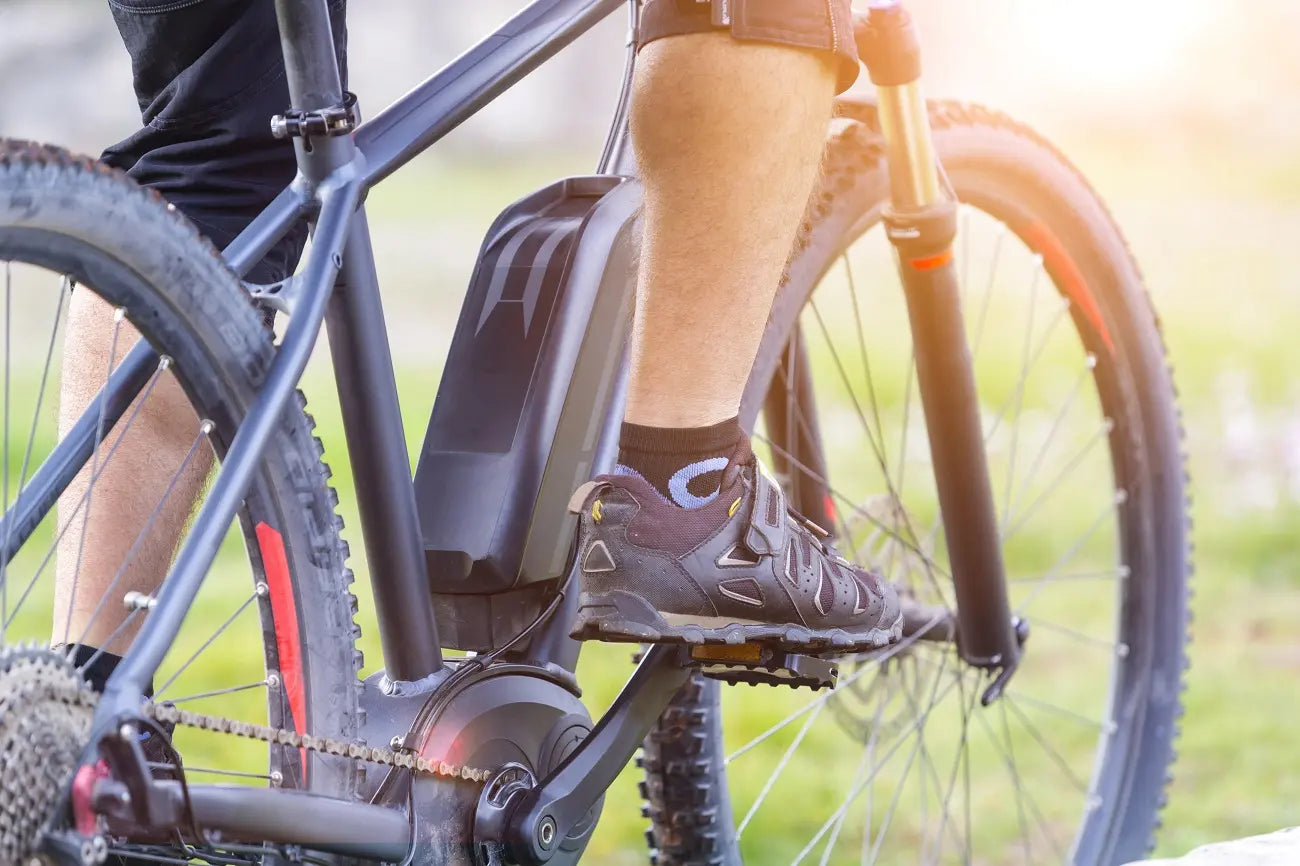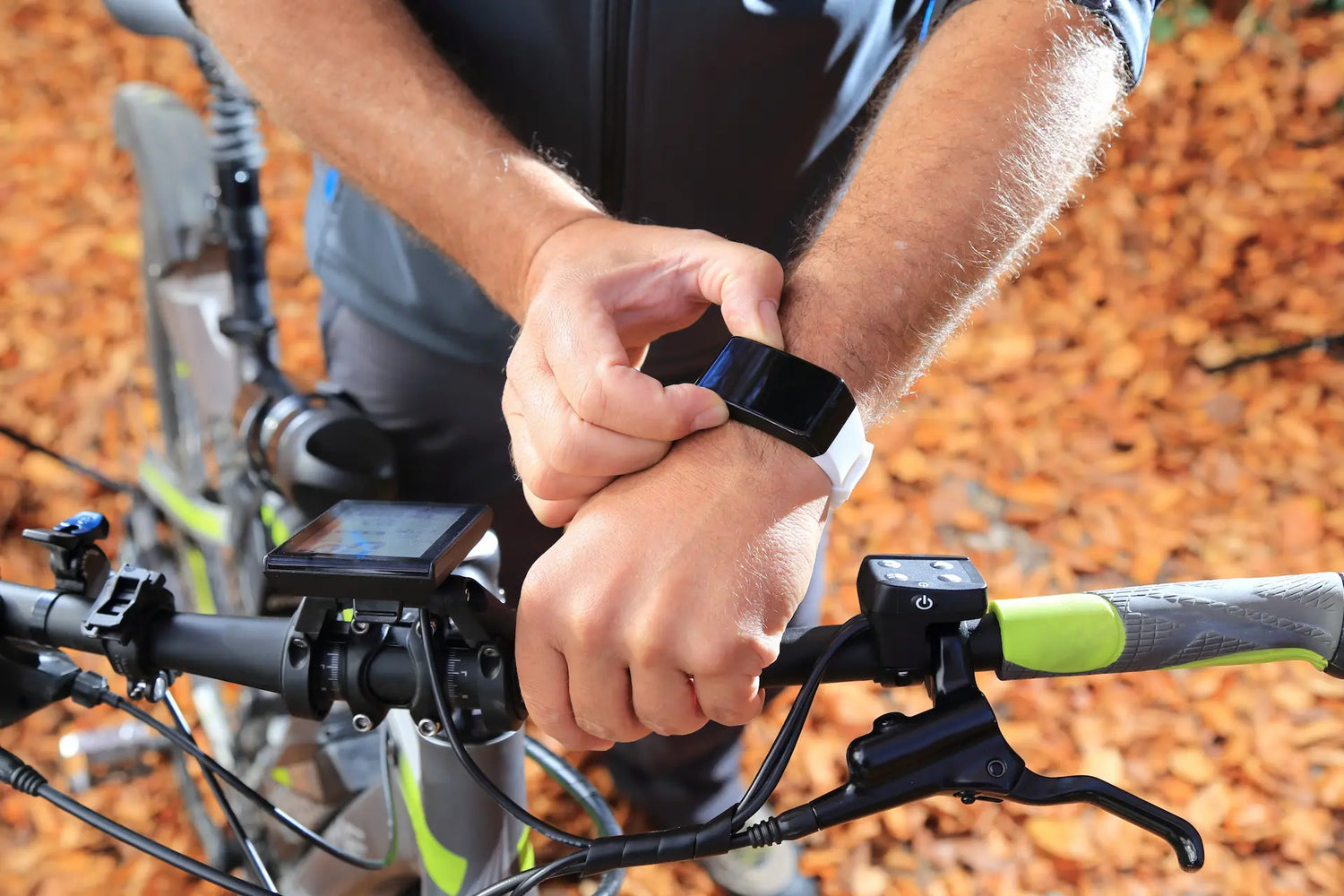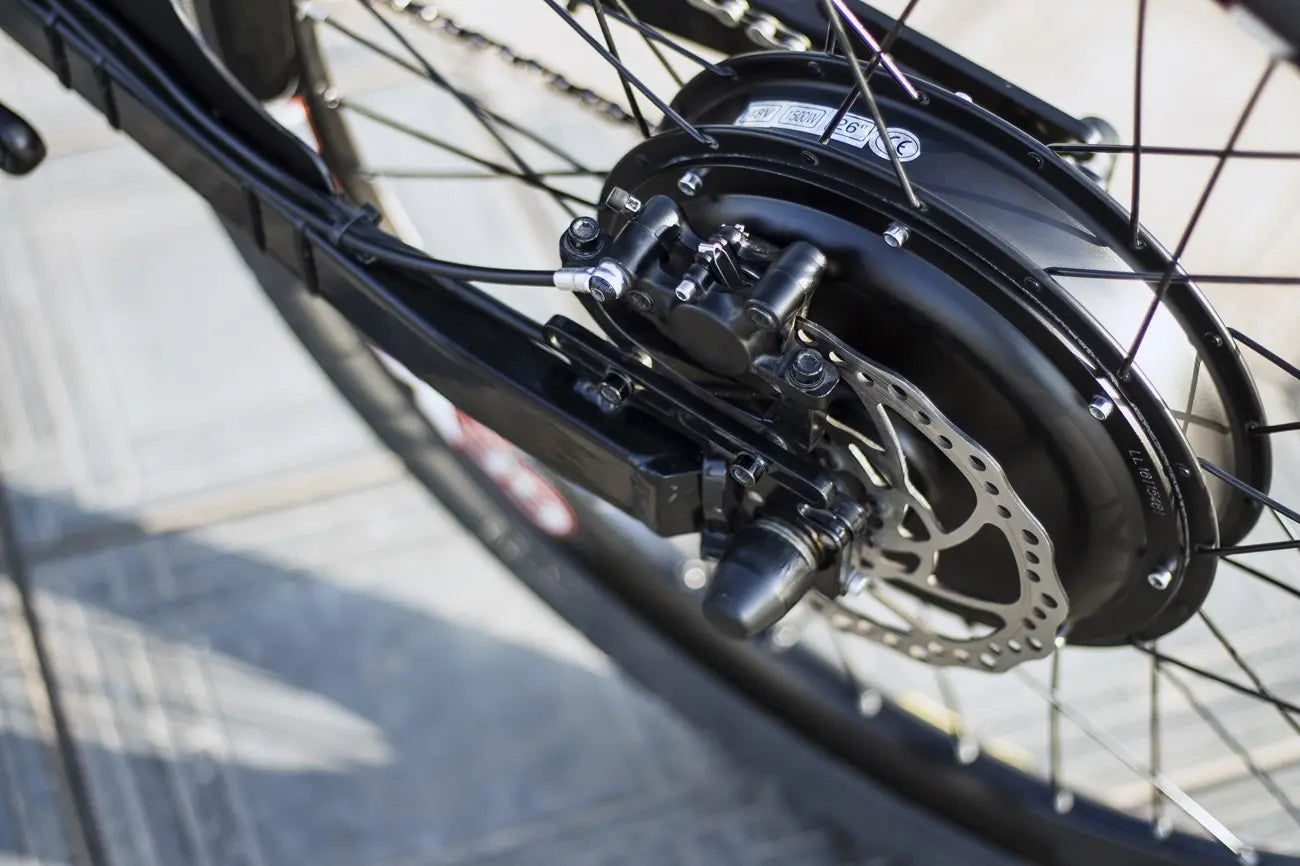
E-Bike Wheels Guide: Features & Maintenance
Updated: 04/02/24
E-bikes are ideal if you’re looking for both physical fitness and easy transportation. It's a combination of an effortless ride and your body involvement. As for the e-bike's body, it's relatively similar to a human. For example, the battery pack and motor are its heart, and the wheels are its legs, which transfer all that power to the road. Understanding e-bike wheels is crucial for maximizing your riding experience and keeping your bike running smoothly.
This comprehensive guide by our team at Rydy Bikes will delve into the components of an e-bike wheel, its different features, e-bike wheel maintenance, and replacement.
If you want to use e-bike wheels to conveniently and safely ride into a better future, you need the fat-tire wheels of Rydy Model I. You can also check out our e-bike accessories as well.
E-Bike Wheel Components: The Core of Your Electric Ride

Electric bicycle wheels, while similar to their traditional counterparts, play a crucial role in the unique functionality of electric bikes. They combine standard bike wheel components with an electric motor (in hub-driven e-bikes) to propel you forward. The components include the following.
Rim
The rim is the metal hoop that forms the base of the wheel and holds the tire. E-bike rims are typically made from strong and lightweight materials like aluminum alloy to handle the additional weight and stress of the motor and battery.
Spokes
These thin metal rods connect the rim to the hub, providing tension and keeping the wheel stable. E-bike spokes may need slight adjustments more frequently than regular bikes due to the added stress from the motor.
Hub
The hub is the center of the wheel where the spokes connect. In hub-driven e-bikes, the hub houses the electric motor. This motor is responsible for converting electrical energy from the battery into mechanical energy to rotate the wheel and propel the bike.
Tire
E-bike tire options vary depending on the riding style and terrain. Wider tires with deeper treads are ideal for off-road adventures, while narrower tires offer lower rolling resistance for smoother rides on pavement.
E-Bike Wheel Sizes: Choosing the Right Fit
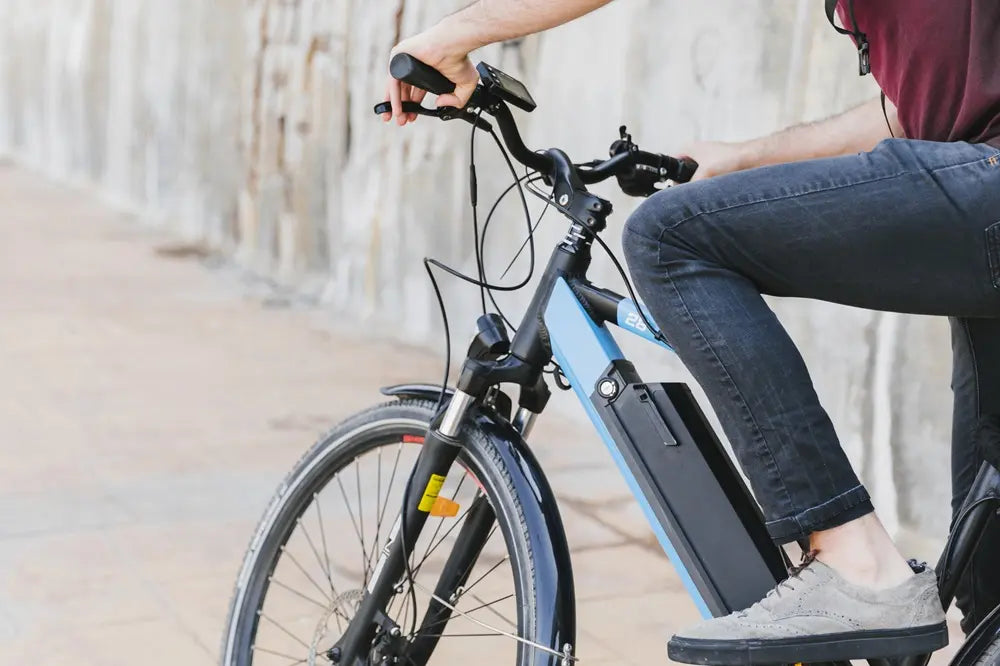
The size of your e-bike wheels significantly impacts your riding experience.
Here's a breakdown of the most common e-bike wheel sizes and their characteristics:
- 16-20 inch: These smaller wheels are common on folding e-bikes and prioritize maneuverability and portability. They offer less shock absorption but are great for navigating tight spaces and urban environments.
- 24-26 inch: This mid-range size provides a good balance between handling and stability. They are suitable for a variety of terrains and offer a comfortable ride for most riders.
- 27.5-29 inch: These larger wheels are ideal for off-road riding. They offer excellent shock absorption and provide better traction on rough terrain. However, they can make the bike feel less nimble and may not be suitable for shorter riders.
Ultimately, the best e-bike wheel size depends on your riding style and intended use. Consider factors like your height, the terrain you'll be riding on, and how much emphasis you place on portability and maneuverability when making your choice.
E-Bike Tire Types
Unlike wheels with traditional bike tires, those with e-bike tires need to handle the additional weight and power of the motor and battery.
The main electric bike tire categories include:
- Road tires: Similar to traditional road bike tires, these are thin and lightweight (around 0.9-1.1 inches) for minimal rolling resistance and high speeds on smooth pavement. However, the lack of tread can make them less grippy on wet or loose surfaces.
- Commuting tires: Wider than road tires (1.1-1.7 inches), these offer a good balance between speed and grip. They are ideal for everyday riding on a variety of surfaces, including city streets and bike paths.
- Mountain-bike tires: 1.6 inches and above wide, these tires (MBTs) boast aggressive treads for superior traction on rough terrain like dirt, gravel, and singletrack. They provide a comfortable ride and increased stability for off-road adventures.
- Fat tires: Such tires are much thicker, around 3.7-5 inches. Some e-bikes, particularly those designed for challenging off-road terrain or snow riding, can sport super fat tires exceeding 4.5 inches in width. This tire type provides increased stability, improved traction, and shock absorption.
To enjoy the benefits of fat tires, ride your perfect foldable e-bike Rydy Model I. It has classical 20x4.0 slide-proof tires, which promise to become your legs' best friends.
Choosing Electric Bike Tires by Terrain

The type of terrain you plan to conquer on your e-bike will significantly impact your wheel choice.
Here's a breakdown to help you navigate:
- Commuting and city riding: Prioritize comfort and puncture resistance by opting for commuting tires. Consider puncture-resistant liners for added peace of mind on city streets.
- Cruising and recreational riding: For a smooth and efficient ride on paved paths and bike lanes, commuting or wider road tires can be suitable.
- Snow riding, loose surfaces, rough terrain: For these, consider fat tires. On surfaces like sand, mud, and gravel, the wider footprint prevents them from sinking in and allows you to maintain control and momentum. The increased surface area acts like a snowshoe, distributing your weight and preventing you from getting bogged down. The deep knobs provide superior grip on snow-covered trails. Fat tires are excellent on rocky trails and uneven surfaces too, as the extra air volume acts as a natural suspension system, soaking up bumps and vibrations for a smoother ride.
How Long Do Electric Bike Wheels Last?
E-bike tire wear depends on a few things, like how much weight you carry, where you ride, and how you ride. In general, most e-bike riders can expect their tires to last between 1,000 and 3,000 miles.
E-Bike Wheel Feature: Hub Motor
One defining characteristic of many e-bikes, associated with their wheels, is the hub motor discreetly integrated into the front or rear wheel. This motor provides the "electric assist" that propels your ride.
Hub motors come in two main varieties:
- Direct-drive hub motor: These offer a simple and efficient design with minimal moving parts. They’re known for their reliability and low maintenance requirements. However, they can be heavier and may offer less top speed compared to geared hub motors.
- Geared hub motor: These motors incorporate gears for increased torque and potentially higher top speeds. This translates to better hill-climbing ability and a smoother ride. However, geared motors can be more complex and require slightly more maintenance.
How Does the Hub Motor Work?
In both types of motors, the faster the motor spins (controlled by the motor controller based on your input), the faster the wheel and the bike will go. When you stop pedaling or use the brakes, the motor disengages and acts like a regular bike wheel, offering minimal resistance.
How Long Do Hub Motors Last?
Hub motors are generally built to last for thousands of miles with proper maintenance. Factors like motor quality, riding conditions, and overall weight load can influence their lifespan. Regular cleaning, checking for loose spokes, and avoiding overloading your e-bike will all contribute to maximizing hub motor longevity.
How Do You Maintain E-Bike Wheels?

For the optimal performance of your wheels, you should maintain them. But how do you maintain bike wheels? Firstly, it’s important to conduct e-bike tire maintenance. Secondly, don't forget about the spokes.
Here are some tips:
- Conduct regular inspections: Look for any loose, broken, or bent spokes. Tighten loose spokes with a spoke wrench (available at most bike shops) but be careful not to over-tighten. If you find broken or bent spokes, it's best to take your e-bike to a professional for repair.
- Listen for unusual sounds: If you hear any clicking or rubbing noises coming from the wheels, it could indicate loose spokes or other problems. Take your electric bike to a mechanic for diagnosis.
Here are a few more maintenance tips:
- Keep your wheels clean: Wash your bike regularly, and properly clean the wheels, to remove dirt and grime that can build up and damage components.
- Avoid riding on flat tires: A flat tire can damage the rim and make it more difficult to control the bike. If you get a flat, fix it as soon as possible.
- Store your e-bike properly: Avoid storing your e-bike in extreme temperatures or direct sunlight, as this can damage the tires and rims.
By following these tips, you can help keep your e-bike wheels in good condition and ensure a safe and enjoyable ride. If you're not comfortable doing any of these maintenance tasks yourself, you can always take your e-bike to a qualified mechanic for service.
How Do You Know When Your E-Bike Wheels Need Replacing?
Electric bike wheels, like any other bike component, are potentially subject to wear and tear.
Here are some common scenarios that might lead to a wheel replacement:
- Tire wear and damage: Punctures, worn treads, and sidewall damage are all signs that a tire needs replacing.
- Rim damage: Bent or cracked rims can compromise safety and should be replaced. This is especially important for electric bikes due to the increased weight and stress on the wheels.
- Hub motor issues: While typically robust, hub motors can malfunction sometimes. If your motor experiences electrical problems or excessive bearing wear, a hub motor replacement or a whole new wheel might be necessary.
In some cases, it's possible to replace just the hub motor on an e-bike wheel. However, this depends on the specific wheel design and manufacturer. If replacing the hub motor isn't feasible, you might need to replace the entire wheel.
Wheel Customization Options
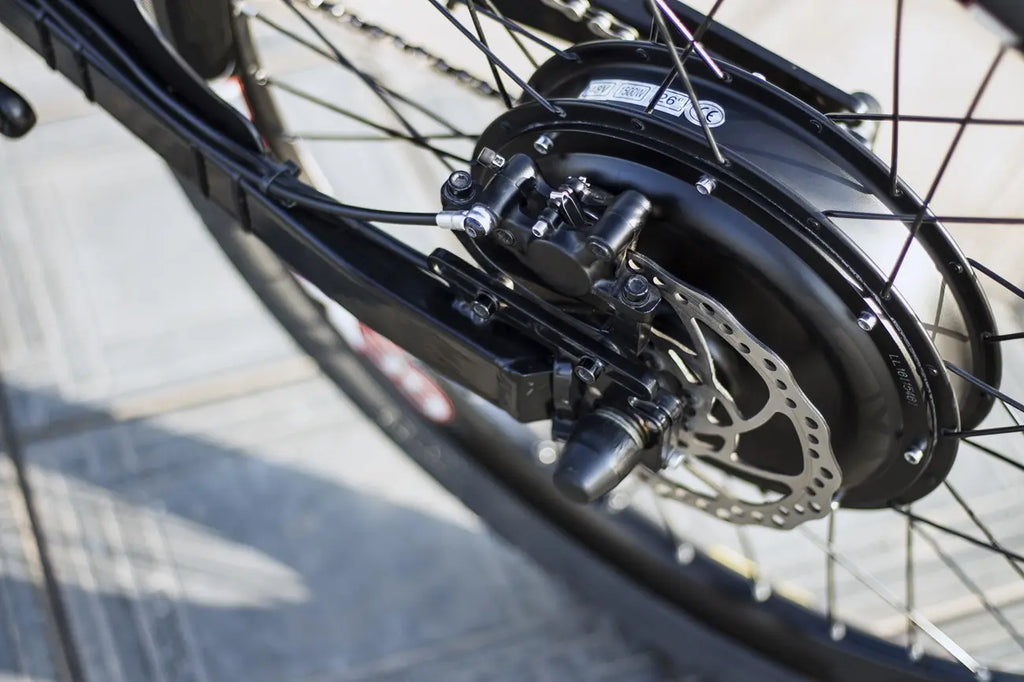
To enhance your ride, you can customize your electric bike wheels. They can also play a role in converting a regular bike into an electric one. Take a look at some points below.
Conversion Kits
If you're looking to convert a regular bike into an e-bike, consider purchasing a pre-built electric bike wheel with a hub motor already installed. This can be a more straightforward option compared to sourcing and installing a separate motor.
Customizable Options
Some manufacturers offer e-bike wheels with various spoke counts, rim materials (e.g., aluminum, alloy), and even color options. This allows you to personalize your e-bike and potentially upgrade certain components for enhanced performance.
Swapping Tires vs. Upgrading the System
If your e-bike has a removable rear wheel, consider purchasing a second wheel with a different tire type for quick swaps depending on your riding needs. For significant upgrades, like changing from a hub motor to a mid-drive motor system, consult a qualified e-bike mechanic, as this might involve frame modifications and complex installations.
Conclusion
E-bike wheels are the foundation for a powerful ride. Understanding their main features, choosing the right ones for your terrain, and familiarizing yourself with hub motors will empower you to make informed decisions for your electric bike. By following proper maintenance practices, you'll have wheels to keep you rolling for miles and miles.
Browse our online shop at Rydy Bikes to find your fully assembled, buy-and-ride, electric bike or upgrade your current e-bike with our customizable accessories.
Shop For E-Bikes & Accessories
SHOP NOW

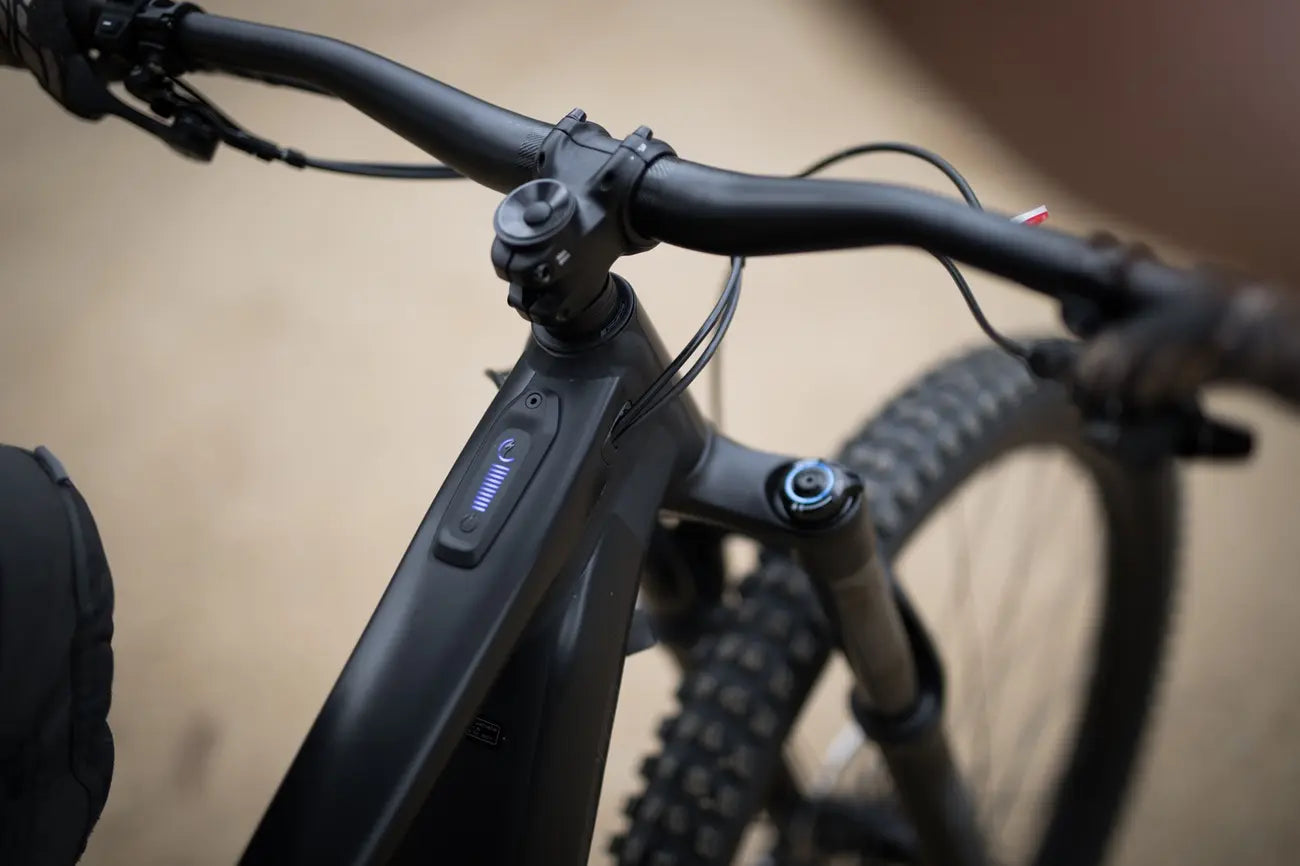
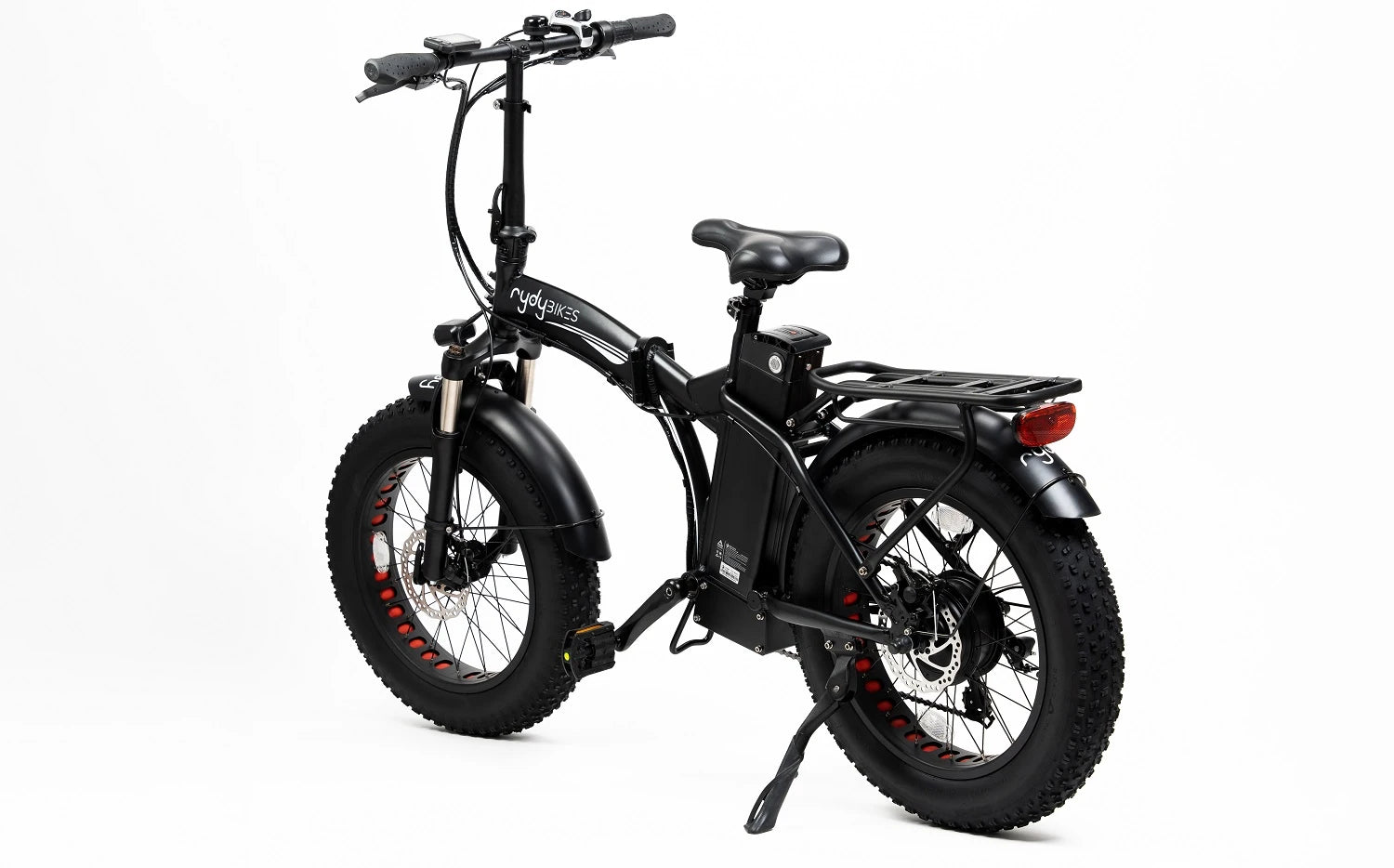

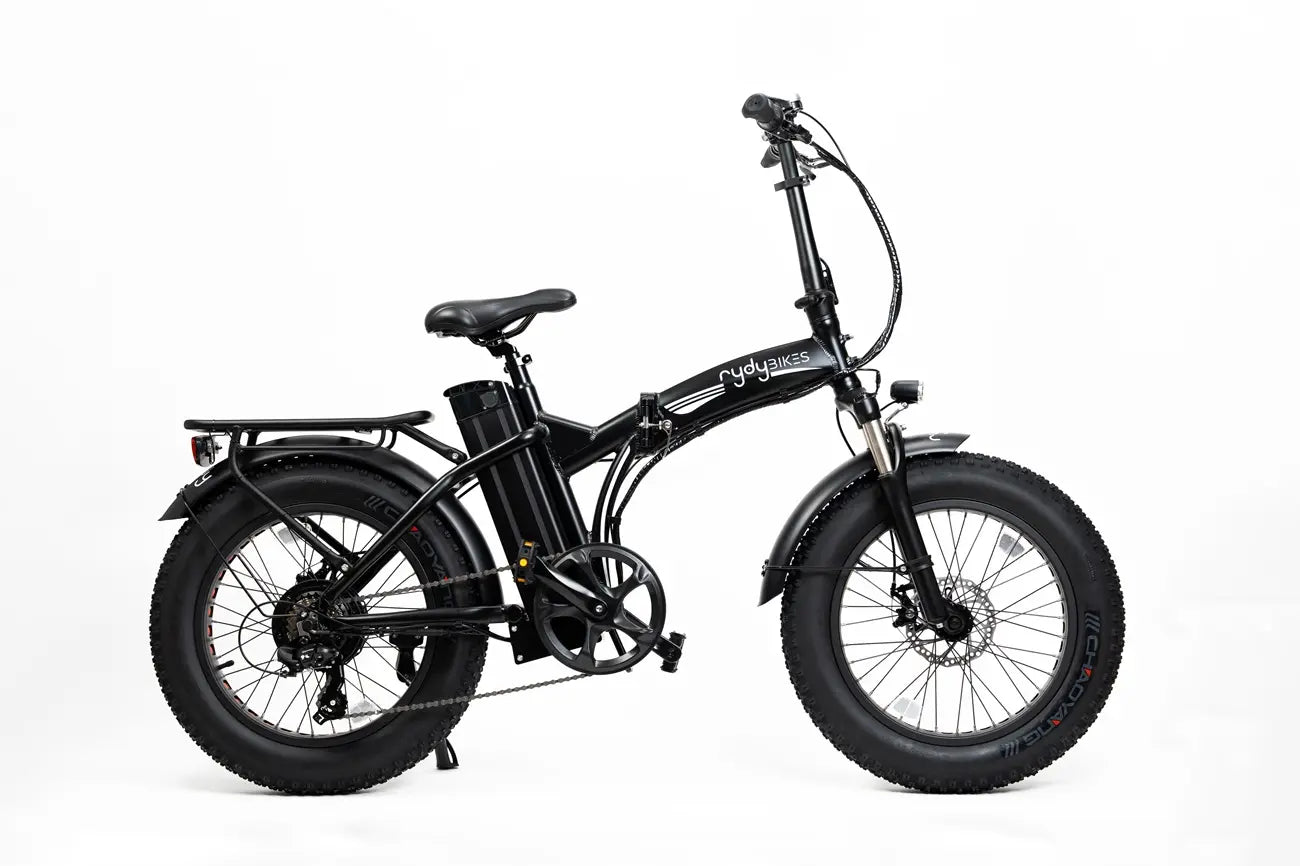

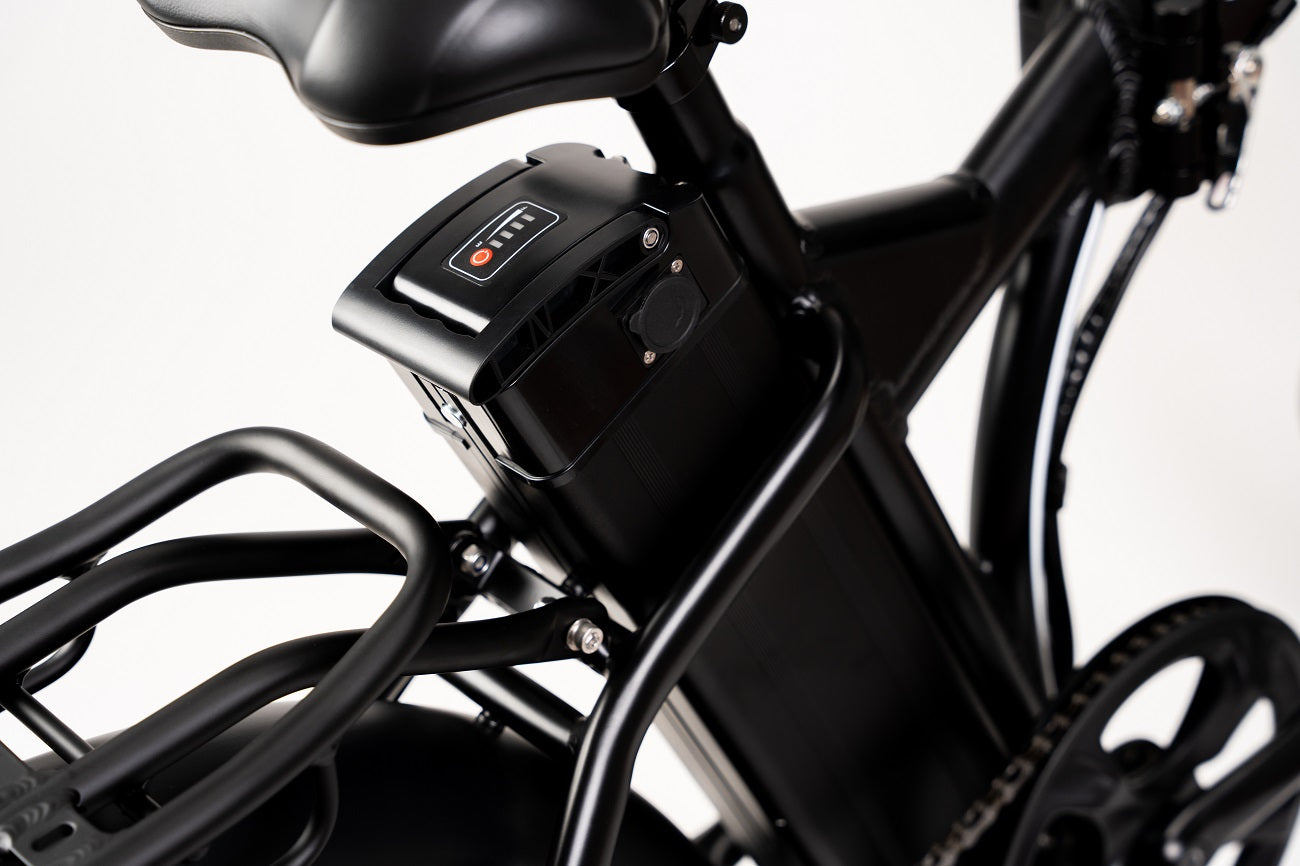


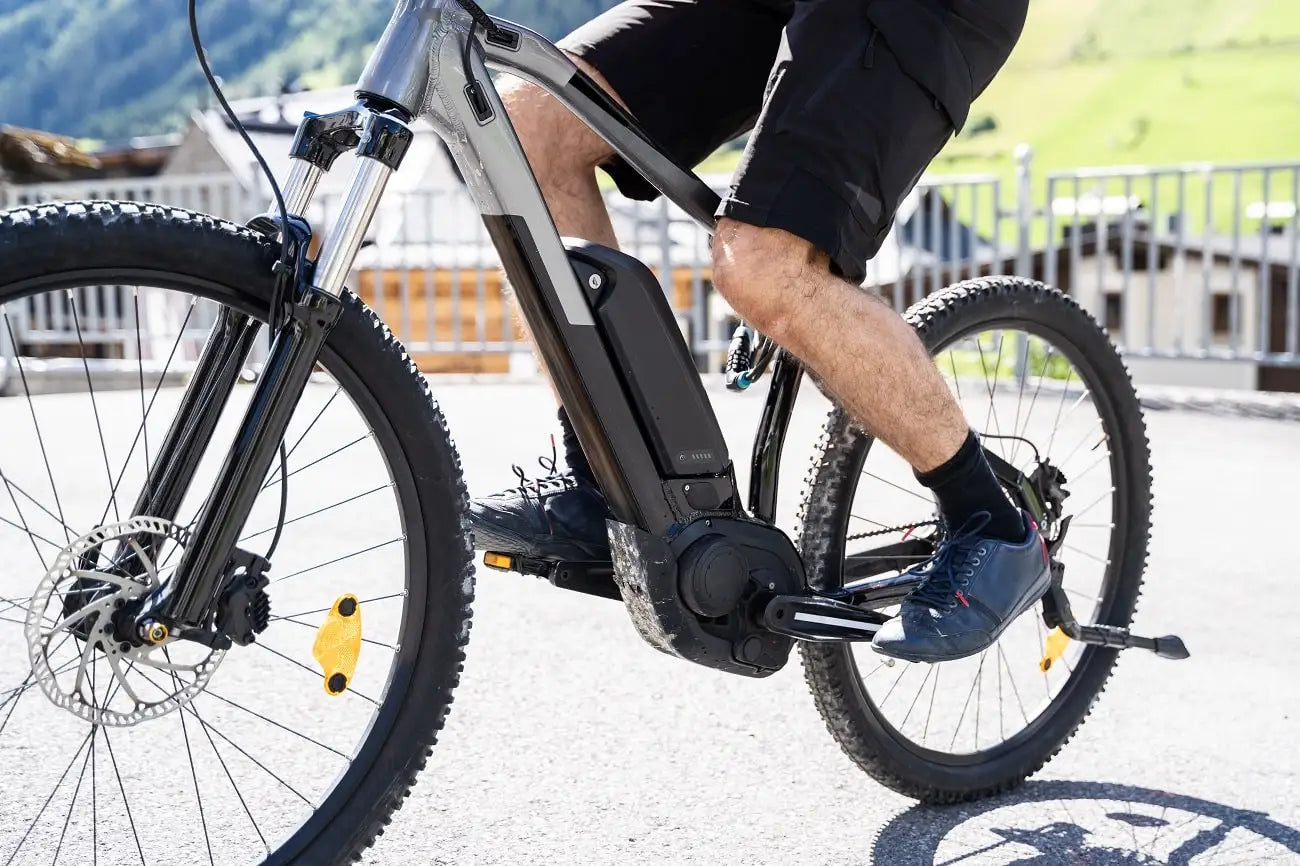
![E-Bike Tax Credit Bill: All You Need to Know About Electric Bicycle Incentive Kickstart Act [2023]](http://rydybikes.com/cdn/shop/articles/e-bike-tax-credit-bill-all-you-need-to-know-about-electric-bicycle-incentive-kickstart-act-2023.webp?v=1695716182&width=1500)
